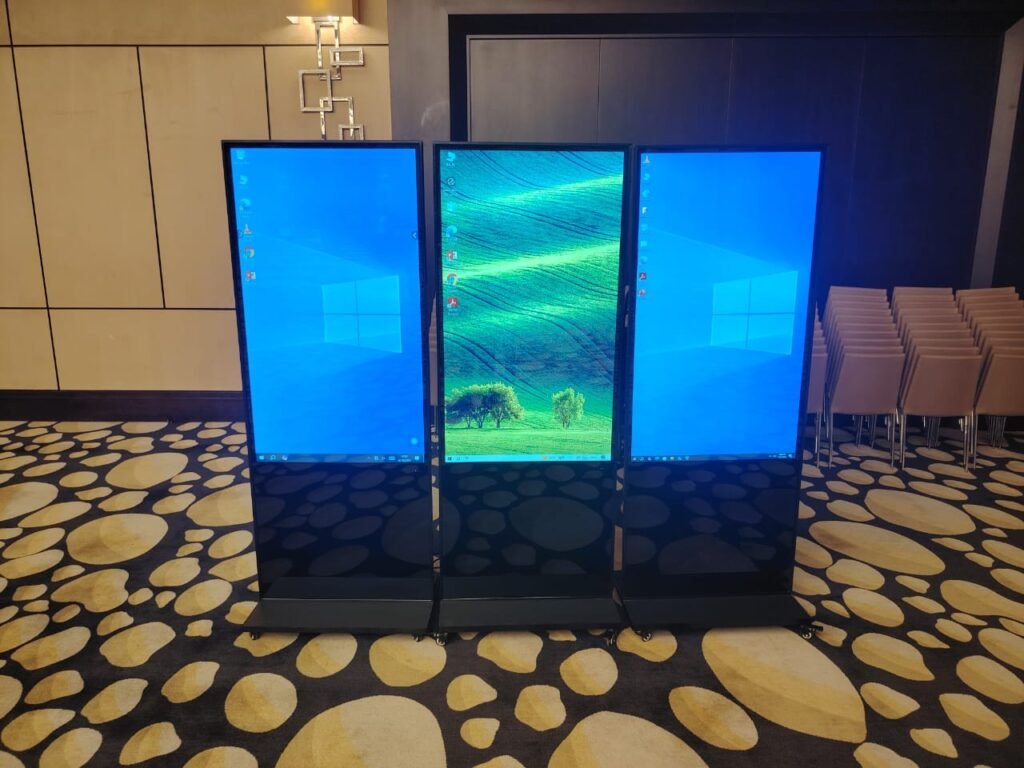Over the past decade, shopping centers have transformed from mere retail hubs into immersive, tech-driven experiences. One of the driving forces behind this evolution is touch technology. From touchscreen kiosks to interactive directories and digital wayfinding systems, the integration of touchscreens has revolutionized how customers interact with physical retail spaces. Let’s take a closer look at how touch technology has evolved and how it continues to reshape shopping center experiences.
- The Early Days: From Paper Maps to Basic Directories
In the early 2000s, shopping centers largely relied on static signage and paper maps to help visitors navigate through stores. These resources were often outdated, difficult to read, and not very engaging. The introduction of basic digital directories marked a significant improvement, but they were often non-interactive, acting more like digital posters than true tools for user engagement.
It wasn’t until touchscreens entered the scene that customer interaction began to take on a whole new form. Shoppers could now search for stores, find promotions, and even locate restrooms or parking areas with a few taps on a screen.
- Rise of Interactive Touchscreen Kiosks
As touchscreen technology matured, shopping malls began integrating interactive kiosks in high-traffic areas. These systems allowed users to:
- Search store names alphabetically or by category
- View floor maps with turn-by-turn directions
- Check real-time promotions or events
- Browse restaurant menus or movie showtimes
These touchscreen kiosks not only enhanced the shopping experience but also helped mall management gather data on customer behavior, such as most-visited stores or time spent browsing certain promotions.
- Touchscreens and Omnichannel Retailing
With the growth of e-commerce, physical stores had to find ways to blend the digital and physical shopping experience. Enter omnichannel retailing, where touchscreens in malls became vital tools for bridging this gap.
Retailers began using in-store touchscreens for:
- Click-and-collect services – Customers could order online and pick up in-store
- Endless aisle displays – Browse entire catalogs that might not be physically available in the store
- Product customization – Choose colors, sizes, or accessories right from a screen
- Self-checkout stations – Reduce queue times and improve efficiency
Touch technology not only helped physical stores compete with online platforms but also made the shopping journey more seamless for tech-savvy consumers.
- Touch Technology and Personalized Experiences
As artificial intelligence and data analytics evolved, so did touchscreen functionality. Today, many shopping malls offer personalized touchscreen experiences. These smart kiosks can:
- Recommend stores or products based on user preferences
- Provide multi-language support for international visitors
- Adjust display content based on demographics or time of day
- Integrate with loyalty apps or QR code scanners
Personalization has helped increase customer satisfaction, engagement, and ultimately, sales. Shoppers now expect this level of convenience, and malls that offer it gain a clear competitive edge.
- Safety and Hygiene Innovations Post-Pandemic
The COVID-19 pandemic presented a major challenge to touchscreen usage due to hygiene concerns. However, this crisis also fueled innovation. Today, malls are adopting:
- Antimicrobial screen coatings
- Touchless touchscreens that use infrared sensors or gesture control
- Voice-activated kiosks
- Mobile screen mirroring, allowing users to control public screens from their personal devices
These advancements have made touchscreens not only safer but even more inclusive for individuals with mobility or accessibility needs.
- Temporary Installations and Event-Based Interactions
Touchscreens are no longer limited to permanent installations. Many malls now deploy temporary touchscreen kiosks for events, promotions, or pop-up stores. Whether it’s an interactive game during a holiday event or a product quiz during a brand promotion, these rentals offer flexibility and attract high engagement.
For mall operators and marketing teams, Touch Screen Rental Dubai has become a popular and cost-effective option. Instead of investing in expensive permanent units, businesses can now rent touchscreen setups for short-term use — offering the same benefits without long-term commitments.
- The Future: Smart Integration with IoT and AI
Looking ahead, touchscreen technology in shopping centers is expected to evolve further with the integration of:
- Internet of Things (IoT) – Touchscreens communicating with lighting, HVAC, and security systems for enhanced ambiance and safety
- Augmented Reality (AR) – Try-on mirrors and virtual dressing rooms
- AI-powered chatbots – Guiding users in real-time for shopping help
- Facial recognition (opt-in only) – For personalized greetings or targeted advertisements
As technology becomes more intelligent, the role of touchscreens will only expand, becoming an even more central element in delivering exceptional shopping experiences.
Conclusion: Enhancing Engagement with Touch Screen Rentals
From simple directories to advanced AI-driven kiosks, the journey of touch technology in shopping centers has been nothing short of transformative. It’s not just about convenience anymore—it’s about creating memorable, personalized experiences that connect with today’s digital-first consumers.
For businesses and mall operators looking to embrace this change without major investment, Touch Screen Rental is the perfect solution. With flexible plans, expert support, and state-of-the-art technology, My Device Star Technologies LLC offers reliable touchscreen rental solutions to elevate shopping center experiences across the UAE.







